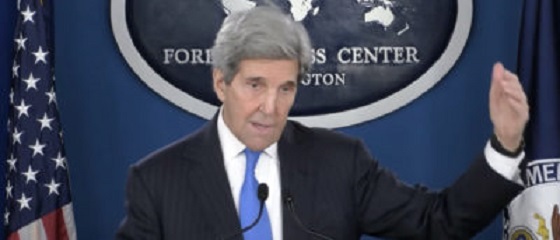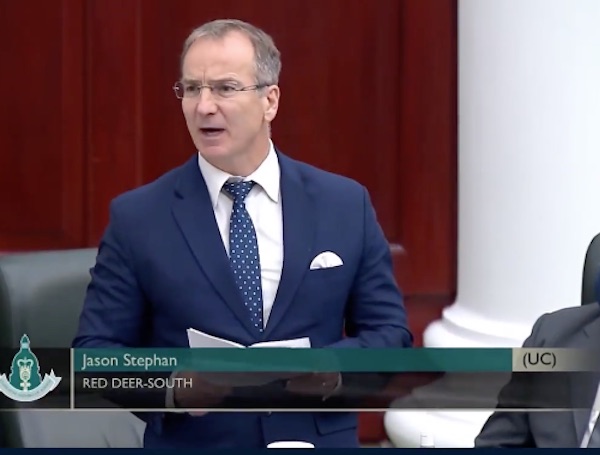Opinion
Looking Behind the Smoke and Mirrors


“Pay no attention to the man behind the curtains,” says the Wizard in the 1939 classic film adapted from the Frank L. Baum masterpiece of entertainment and satire.
While seen primarily as a film for young people it has inspired sequels by Baum, and then later has spawned spoofs, pastiches and alternate views of entire books and the cast of characters.
The scene is near the climax of the film and as Toto, who has escaped from Dorothy, runs towards a curtain and pulls it back to reveal the Wizard who is speaking into a tube and controlling a distorted image.
“Pay no attention to the man behind the curtain,” he says to the group who is watching.
Caught in his lies, he tells the story of how he came to Oz and became the Great Wizard.
If you look into the history of the film and the subsequent books it is apparent that the Wizard, Dorothy, Toto, Tin Man, Scarecrow and Lion are archetypes and represent more than they seem to be. The entire film is an allegory about power and greed and a dire warning that not all is as it seems.
Our modern history, our pandesent is beleaguered with the same problem.
Not all is as it seems.
We could discuss US politics with Qanon and the Main Stream Media at odds over perceptions and reality, but it would conclude nor solve no problem. Is Donald Trump the worst president ever or are the Democrats demons behind every Bush? Hmmm.
In Canada, we have a similar problem without a national information source that permeates society at all levels. It is factual that our Main Stream Media (CBC, CTV, Black Press and others) have been encouraged to be gentle with the Liberals and they certainly have been. ‘Alternate’ news organizations such as True North and the Rebel have traditionally been treated as personae non grata by the Liberals and until this month, by the ruling party in Alberta as well.
Yet, funded or not Main Stream Media do not have all the news sources and reports that reveal a different picture than ‘sunny days’ Justin wants us all to see.
Most Canadians would be surprised to know that there are lawsuits and court cases pending against Prime (Crime) Minister Justin Trudeau (and his cronies) on a number of levels and a number of charges that include corruption and deception on Covid 19 responses. There is also a motion that includes private copyright on a national law!
Super Lawyer Rocco Galati is suing the Canadian government, Trudeau, Federal and Provincial Health Ministers, and others in the first of its kind supreme court lawsuit. His argument is fact and research based and he asserts that the extreme COVID Measures that have now been proven to cause 14 to 1 more deaths than the actual virus!
Rebel News reporter, Ezra Levant has covered this story in a hard-hitting report at:
A secondary site, globalresearch.ca has interviewed Galati at:
Just as many YouTube, Twitter and alternate news sources (NOT CONSPIRACY) have reported and documented, the Galati lawsuit has a long list of experts, data, and more to prove the case against the government.
Presently, a handful of countries including the United States and Germany have similar push back against extreme measures.

Secondly, Canadian Norman Traversy delivered a 192 page document to the US Embassy in Ottawa on July 1, 2020 alleging that Justin Trudeau is guilty of corruption in the S.N.C. Lavalin scandal at many levels, just as many of his cohorts in the Liberal Cabinet and sphere of influence. Previously, Donald Trump, the CIA and FBI were delivered copies and are now aware of the charges. According to the new USMCA agreement section 27.5, any leader charged with corruption can and will be investigated to the full extent of the law.
As of mid August, Traversy now has legal counsel for his legal action and as his website notes:
“We (Norman) has (have) served a letter to the Ethics Commissioner concerning Trudeau’s obstruction of justice. We are piggybacking on the WE investigation, the Trudeau III report. We have CC’d President Trump and President Andres Manuel Lopez Obrador.”
As reported by Traversy, extensive preparations for the Private Prosecution in the Ontario Court of Justice are ongoing with support growing quickly from all sectors of Canadian society.
“We will be able to add further charges to the motion once we are heard, and we will be adding MC IMC elements (Picton Pig Farm),” noted Traversy in an interview.
https://thephaser.com/2019/10/justin-trudeau-arrest-update-pickton-pig-farm-c_a/
While there are many sources for information on such activities in the United States and worldwide, Canadian sources are few and I defer to Norman Traversy who states the case best in his letter to President Trump and Mexican President Obrador that explains three separate allegations:
https://justiceforcanada.files.wordpress.com/2020/07/letter-to-trump_obrador-with-brief.pdf
All things considered, with a Crime Minister who is allegedly complicit in corruption of various sorts and the promotion of global corporation sponsored policy in Canada should not have the mandate to lead our country considering his demonstrated moral compass. I am embarrassed and ashamed of the morals of our leadership in our country.
May God have mercy on our souls if we re-elect this evil man.
Daily Caller
John Kerry Lurches Back Onto Global Stage For One Final Gasp


From the Daily Caller News Foundation
John Kerry, one of the grandest and most persistent climate scolds of the 21stcentury, lurched back into the news this week when he was knighted by Britain’s King Charles, a prominent climate scold in his own right.
In fact, their shared efforts involving flying off on carbon-spewing private jets to lecture the masses to live smaller, more costly lives in the name of fighting climate change was the motivation for the award, as the King thanked Kerry for his “services to tackling climate change.” That seems to be a bit of a grammatical error, but when royalty is involved, no one really cares, do they?
“King Charles and I share the same point of view — that there’s an urgency to doing things,” Kerry told the Globe in an interview. “He’s been ahead of most folks on this from the time I can remember… He always had a commitment to nature.”
Unfortunately for the U.K.’s citizens, the Labour government’s “commitment to nature” mainly appears to involve covering thousands of acres of bucolic British farmland with massive solar arrays and felling thousands of forest trees to make home to big wind installations these days.
Projects like those – frequently forced by the central government on objecting rural communities – form the centerpiece of Secretary of State for Energy Security and Net Zero Ed Miliband’s program to deindustrialize the formerly formidable British economy.
That program – based on the shared philosophy of King Charles and Kerry – has sent the U.K.’s utility rates skyrocketing to the highest on earth. It has also rendered the former global power dependent on imports from foreign nations for its energy security, with China the most prominent among them.
Such are the fruits of the King Charles/Kerry “point of view.” Most would agree with Kerry’s statement that “there’s an urgency to doing things.” The problem is that pretty much everything he and the King have been doing in this realm across the first quarter of the 21st century leads inevitably to serfdom to the Chinese Communist Party.
In an interview with the Financial Times the same day, Kerry repeated much of the tiresome dogma of his alarmist religion, in the process excoriating President Donald Trump as a “denier” and calling U.S. corporate leaders cowards for straying from the narrative he and the King prefer. “It is not that they don’t believe [in climate change] or they don’t want to move forward. They are just scared,” Kerry said of the corporate CEOs, adding, “The process of Donald Trump in the last months, coupled with the justice department, coupled with his vengeance programs, has scared… a lot of people.”
But a more believable alternative explanation for the shift away from the twin manias of ESG and DEI by many companies in recent years is that these corporate leaders have a fiduciary duty to maximize returns on capital to their investors. The problem for Kerry and his disciples is that the preferred alternatives they have advanced too often devolved into unprofitable boondoggles that fail to satisfy that duty. Kerry wants to place the entire blame on Trump – who, ironically, was recently honored by King Charles himself with an unprecedented second state dinner. But the truth is that shift started in earnest in 2023, when Joe Biden’s autopen was still in charge of the ship of American state.
That shift has certainly accelerated this year, as companies have been freed from the incessant hectoring of the Biden government and are now being denied access to the ruinous green subsidies from the IRA that so radically distorted energy markets. This has little to do with climate denialism or cowardice and much to do with sound business practice and CEOs properly carrying out the mandates of their high positions. No amount of hyperbolic talking points from Kerry or the King can change that reality.
In the end, Kerry’s remarks come off as a lot of sound and fury signifying nothing. Now in the twilight of his career, he has become a relic, a totem of a fading global religion whose end cannot come soon enough.
David Blackmon is an energy writer and consultant based in Texas. He spent 40 years in the oil and gas business, where he specialized in public policy and communications.
Daily Caller
‘No Critical Thinking’: Parents Sound Alarm As Tech Begins To ‘Replace The Teacher’


From the Daily Caller News Foundation
Parents are growing increasingly concerned about the prevalence of technology in classrooms, and the negative side effects that change is fueling among children nationwide.
Ever since the COVID-19 pandemic pushed schools to remote learning, many have only grown increasingly reliant on technology, shifting assignments into digital forms and handing every student a computer or tablet to aid their education in the classroom. But after seeing their kids become angrier, less sociable and less educated, parents are asking where the teachers have gone.
“What are we doing with an iPad all day, for eight hours a day in our kids’ hands?” Patricia McCoy, a mother of four in Wyoming, told the Daily Caller News Foundation. “Honestly, it’s disturbing. They give your kids worksheets on the iPad. There’s no actual critical thinking happening because they’re given apps to replace the teachers.”
Even when parents ask for additional help for their struggling children, the solution at some schools always comes back to more technology.
“If your kid is struggling in math, instead of giving them tutoring, they’re going to recommend to you that your child use this app on their iPad to help teach them how to do this math,” McCoy continued. “But that app doesn’t teach them how to do the math. They enter the problem and it gives them the solution all written out and worked out, so there’s no critical thinking being done. The answer is being given to them. They have ChatGPT at the ready, and other things similar to ChatGPT, which, again, does all the thinking for them. And all they have to do is show up, log into the iPad, get the answers from one app, put it into another app and get the grade.”
This has some parents wondering where the teachers have gone and whether they are teaching their students at all.
“THEY DON’T WANT TO TEACH”
“Covid did create a lot of this, and it made it a lot easier for some of the teachers now to just place these kids in front of a screen,” Mike Maldonado, a California father of five, told the DCNF. “And it makes it easier for some of these teachers because they don’t want to teach. They’re just there for a job.”
“We can’t ignore the fact that all this stuff makes it easier on the teacher, which actually, I think produces a worse result, “Jaime Brennan, member of the Frederick County Board of Education who spoke on behalf of herself and not the board, told the DCNF. “When a teacher can go online and make up an assignment using AI, now they haven’t thought. Now they’re not using their brainpower, and it’s like a trickle down effect. We’ve already introduced screens and technology to the level that as humans, I don’t think we were designed to use, and we haven’t adapted to it very well.”
Critically, Brennan said, the use of AI has prevented students from developing automaticity, the skill of memorizing basic solutions, such as simple addition, to the point that you do not even think about it, which is a foundational skill students carry on throughout their education and adult life.
McCoy told the DCNF that the digital learning environment has left her youngest son academically “two to three years behind” his siblings, who did not go through this new screen-based school system.
“He is drastically farther behind academically,” McCoy said. “He does what he needs to to pass, but intellectually and academically, he is years behind his two brothers and his sister at this age, and that is sad and heartbreaking as a mother to know that I probably failed my child because I went along with what the school said was going to help them.”
Despite being “years behind,” McCoy’s son is on track to graduate on time.
“We graduate kids who have to go to community college and take remedial math,” Brennan mentioned. “Our kids leave 12th grade and they go to 13th grade. So we’re putting out kids that are not ready to operate in the regular world.”
POSSESSED BY THE SCREEN
Not only is she worried about his education, the concerned mom has seen a noticeable shift in her son’s mood as he is forced to rely on more and more screen time.
“I tried to take my son’s phone away one time, and it looked like a demon was looking back at me. My son was not looking at me,” McCoy recalled. “His eyes were completely black and cold. It was like he was a totally other person, like a drug addict, and you’re taking their drug from them. And he was 15 at the time.”
Without his phone, McCoy said her son was a new person.
“That week, he was a totally different person. He wasn’t overly tired and drowsy all day. He was actually interacting with the family and spending time with us. Instead of being shut down and closed off in his room, he was playing with our dogs more,” McCoy said.
Maldonado thinks these behavioral issues stem partly from the lack of human interaction children experience in increasingly screen-dependent classrooms.
“Part of the problem is that they’ve lost a lot of the interaction,” Maldonado said. “This is why some of these kids I think act out, because they don’t want to listen to the teacher. There has to be that communication between two people, two humans, and not a screen where they can’t really interact and get the tone, the voice inflection of a response.”
“That is a major issue,” Maldonado continued. “Without social skills, how do you function in society? And we see it all the time. Social skills are definitely learned, it’s a trait that you pick up from interacting with people when you’re young. And that’s the big thing, people don’t realize that if there’s no interaction, that person is going to be withdrawn, not just from the classroom, but from the home and from society.”
The issue is especially apparent in children who were younger during the Covid year, Maldonado said. The so-called “Covid babies” are typically “the ones who you can see have the majority of the behavioral issues.”
“It is hard to get some of these kids to actually look you in the eye and make eye contact. They don’t know human interaction,” Brennan concurred, adding that students today are not even dating as much as they used to. “I’m really concerned where that’s going to lead, and what our kids are going to be like. We’re already seeing negative impacts of kind of this disintegration, people are waiting till later to getting married. They’re not getting married.”
THE PRICE AMERICA IS PAYING
Meanwhile, as the use of artificial intelligence (AI) among youth increases, more data and stories are coming out revealing the tool often exposes children to inappropriate content, damages the development of critical thinking skills, and at times, drives kids to suicide by explicitly coaching them to do so. Brain scans from the Massachusetts Institute of Technology (MIT) revealed that brain engagement was severely diminished under participants who used AI compared to those who used a traditional search engine, and memory recall following assignments completed with AI tanked.
Interestingly, schools that struggle with budget concerns and often fail to see promised district-wide staff raises somehow find funds to buy brand-new devices for every student — even when they already had slightly older, but still functional devices.
“Most of [the money goes] to administration and fees and other things that have nothing to do with the education of our kids, or they spend it on these expensive iPads and technology that shouldn’t even be in the classrooms, and then they go to the state and say, ‘You’re not giving us enough money. We need more money,’” McCoy told the DCNF. “Well, we keep throwing money at the problem, but the problem doesn’t get better or go away. It gets worse every year. So clearly, money isn’t solving the issue on why our kids can’t read, write and do math.”
“Stop spending the money on the iPads and put that money back in the classrooms instead,” McCoy continued. “Give it to the teachers.”
While Tina Descovich, co-founder and CEO of parental advocacy group Moms for Liberty, mirrors the concerns of many parents, she also told the DCNF there could be a place for technology in the classroom.
“I think they have to be used in a very responsible fashion,” Descovich said. “There’s so many wonderful teachers that would like to use AI in a way to help enhance their skills and teach their children better.”
Moms for Liberty signed a pledge with the White House in September to help foster innovation and interest in AI with America’s youth.
Brennan remains concerned that technology in the classroom prevents kids from thinking independently and may harm future skill building rather than facilitate an interest or expertise in technology.
“Are you trying to keep pace with the kids who are learning to use the technology, or are you trying to create the kids who are going to develop the technology? Because those are two different things,” Brennan said. “So if we’re just teaching our kids to be technology consumers, then sure, the easy way out is to do everything on the technology. If you’re trying to keep teach kids to be the technology developers, they need to learn to think and process away from the technology. They need to have other skills that are not technology based.”
PARENTS STILL HAVE POWER
For parents concerned about the technological takeover of their children’s classrooms who feel like their schools aren’t listening to them, Descovich said that along with helping their kids at home when possible, parents should “rally with like minded parents.”
“Start educating your community,” Descovich said. “I think when parents really understand what’s happening and what the concerns are and what the risks are, they will want to take action. And when you have enough parents showing up at school board meetings and speaking about an issue we have, as we know, you definitely can make an impact, and they will listen.”
-

 Alberta1 day ago
Alberta1 day agoFrom Underdog to Top Broodmare
-

 Opinion13 hours ago
Opinion13 hours agoLandmark 2025 Study Says Near-Death Experiences Can’t Be Explained Away
-

 Focal Points14 hours ago
Focal Points14 hours agoSTUDY: TikTok, Instagram, and YouTube Shorts Induce Measurable “Brain Rot”
-

 Alberta12 hours ago
Alberta12 hours agoRed Deer’s Jason Stephan calls for citizen-led referendum on late-term abortion ban in Alberta
-

 Health15 hours ago
Health15 hours agoTens of thousands are dying on waiting lists following decades of media reluctance to debate healthcare
-

 Indigenous11 hours ago
Indigenous11 hours agoIndigenous activist wins landmark court ruling for financial transparency
-

 COVID-192 days ago
COVID-192 days agoCanadian government seeking to destroy Freedom Convoy leader, taking Big Red from Chris Barber
-

 National2 days ago
National2 days agoQuebec proposes to ban public prayer, harden laws against religious symbols


